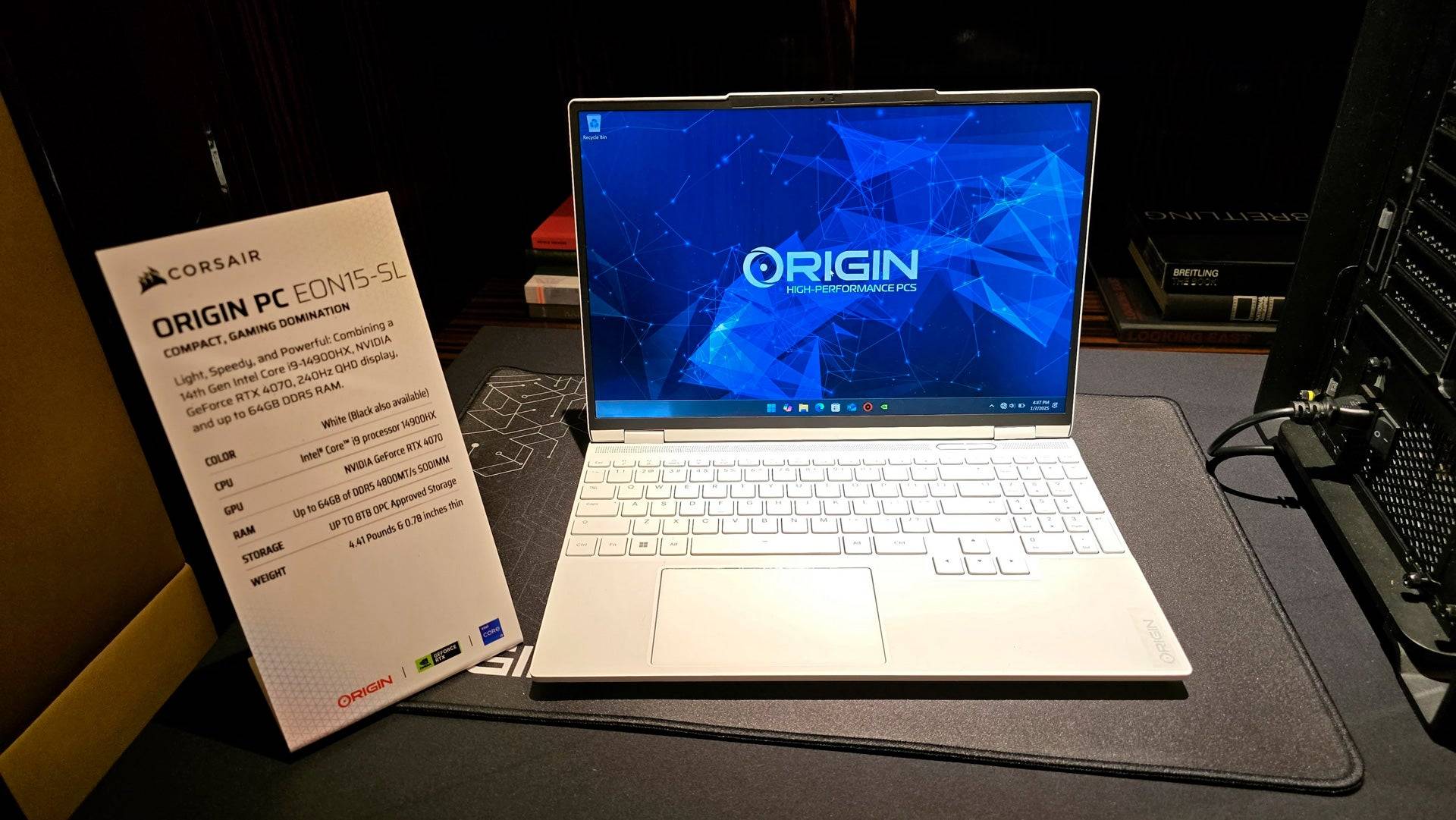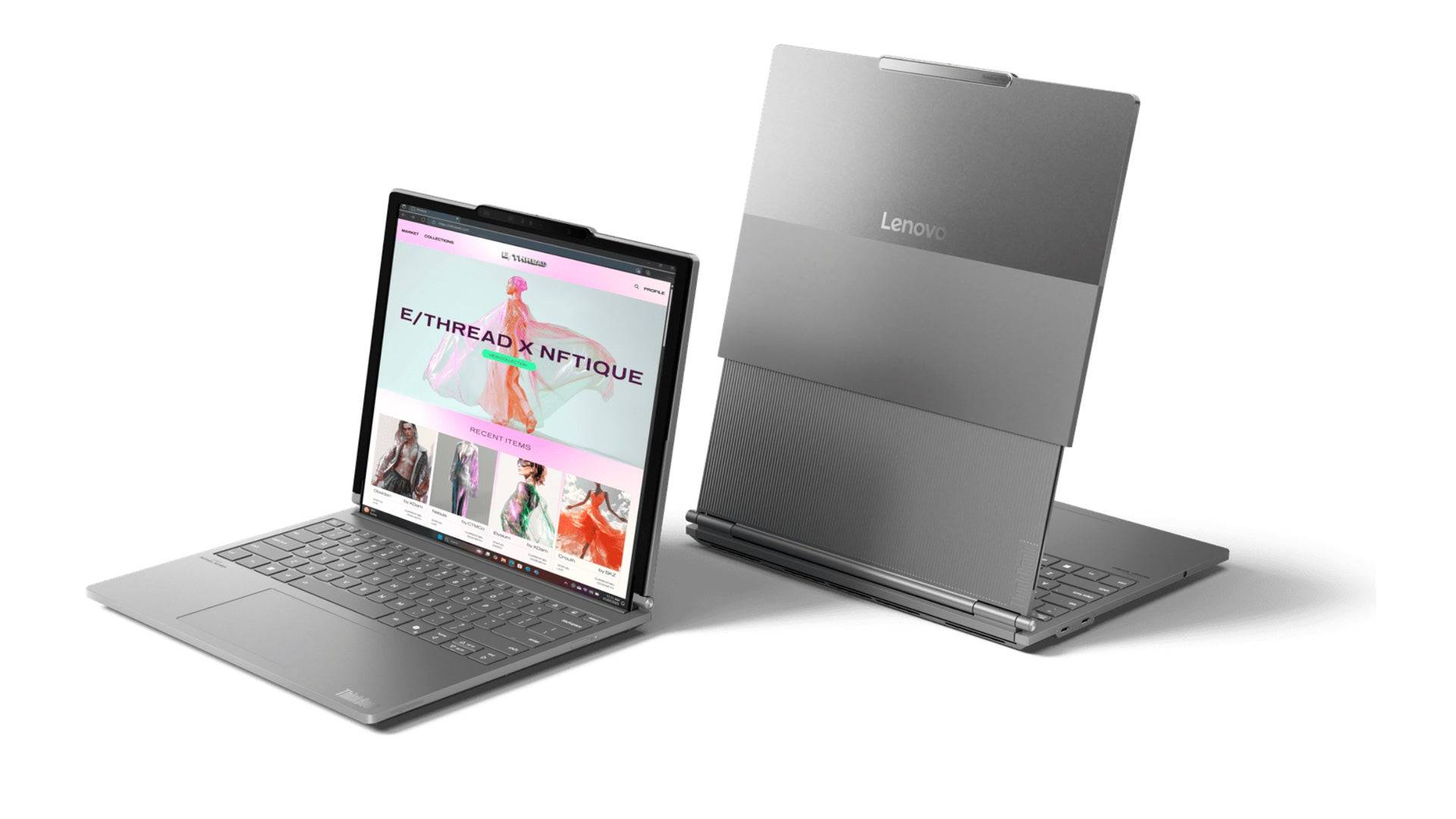CES never disappoints when it comes to showcasing the latest in laptops, and this year's event was a treasure trove of innovations, especially in the realm of gaming laptops. I explored the bustling show floor and various packed suites and showrooms to uncover the key trends shaping the gaming laptop market this year. Here are the major themes that stood out in the world of gaming laptops at CES.
A Huge Diversity of Designs
Gaming laptops have always boasted a variety of styles, but this year's offerings felt particularly diverse. This trend is driven by brands like Gigabyte and MSI, which are increasingly blending productivity with gaming capabilities. High-end gaming laptops are now expected to offer something beyond just powerful hardware.
This year, you'll find gaming laptops spanning a broad spectrum of designs. For instance, the Gigabyte Aero series presents sleek, elegant models that seamlessly fit into professional environments. On the other end of the spectrum, the MSI Titan 18 HX AI Dragonforged Edition boasts bold graphics on its lid, making a clear statement about its gaming prowess.
 RGB lighting remains a staple, with innovations like wrap-around lighting rings, illuminated mechanical keyboards, and even trackpad lights. The Asus ROG Strix Scar series particularly caught my eye with its AniME Dot Matrix LED display, which can showcase text and animations on its lid using white LEDs.
RGB lighting remains a staple, with innovations like wrap-around lighting rings, illuminated mechanical keyboards, and even trackpad lights. The Asus ROG Strix Scar series particularly caught my eye with its AniME Dot Matrix LED display, which can showcase text and animations on its lid using white LEDs.
While the core design principles remain familiar, expect to see some intriguing novelties alongside the traditional range of bulky, high-performance machines and sleek, lightweight models with diverse hardware options.
 AI Assistants are Coming
AI Assistants are Coming
Last year, AI was touted as a feature in many laptops, but the implementations often fell short. This year, however, multiple vendors showcased AI Assistants designed to enhance user control over their PCs without the need for manual software adjustments.
In one demonstration, an MSI representative used a chatbot to specify the type of game he wanted to play, and the assistant automatically adjusted the laptop's performance settings to match the game's intensity. While these systems are intended to work offline, I remain skeptical about their efficiency compared to manual adjustments. We'll need to see how these AI capabilities evolve and perform in real-world scenarios.
Mini-LED, Rollable Displays and Other Novelties
Mini-LED technology is finally making significant inroads into the gaming laptop market. Asus, MSI, and Gigabyte all displayed Mini-LED laptops with top-tier specifications and pricing. These models featured over 1,100 local dimming zones, reducing blooming and enhancing contrast, along with impressive brightness and vibrant colors. While OLED still excels in contrast, Mini-LED's lack of burn-in risk and higher sustained brightness make it an exciting prospect for future models.
There were also some unique innovations on display. The ASUS ROG Flow X13, returning after a year's hiatus, now supports eGPUs via USB4, eliminating the need for proprietary connections. Asus showcased it connected to a new eGPU with up to an RTX 5090, offering a powerful boost reminiscent of a Microsoft Surface on steroids.
 Elsewhere, Asus presented the Zenbook Duo, a dual-screen productivity laptop, but Lenovo stole the show with the Lenovo ThinkBook Plus Gen 6 Rollable. This isn't a gaming laptop, but it's noteworthy as the first notebook with a rollable OLED display. With a simple button press, its 14-inch screen extends upward, adding 2.7 inches of screen real estate. While the design may seem awkward and concerns about the durability of the extension mechanism persist, it's a pioneering product that promises future improvements as the technology matures.
Elsewhere, Asus presented the Zenbook Duo, a dual-screen productivity laptop, but Lenovo stole the show with the Lenovo ThinkBook Plus Gen 6 Rollable. This isn't a gaming laptop, but it's noteworthy as the first notebook with a rollable OLED display. With a simple button press, its 14-inch screen extends upward, adding 2.7 inches of screen real estate. While the design may seem awkward and concerns about the durability of the extension mechanism persist, it's a pioneering product that promises future improvements as the technology matures.
Ultrabooks Continue to Rise, Even for Gaming
Ultrabooks are increasingly prevalent, even within gaming line-ups. Major manufacturers now offer gaming laptops in the Ultrabook form factor, characterized by their thin, light, and minimalist design. Gigabyte, for example, has revamped its Aero series to embrace this trend, and the models I saw were impressive.
This shift makes sense for gamers who don't need to run the latest games at maximum settings. These new Ultrabooks allow for gaming while maintaining exceptional portability and productivity. My review of the Asus TUF Gaming A14 last year demonstrated that it's possible to integrate a dedicated graphics card into these machines without compromising their on-the-go productivity.
 Moreover, with the right settings adjustments, you can bypass the need for a dedicated graphics card altogether. The latest processors from AMD and Intel offer surprisingly robust gaming performance, as evidenced by recent handheld devices. Features like AMD FidelityFX Super Resolution and Intel XeSS, along with frame generation, enable relatively demanding games to run smoothly. For casual gamers, this might be sufficient, raising questions about the future necessity of lower-end GPUs like the RTX 4050M.
Moreover, with the right settings adjustments, you can bypass the need for a dedicated graphics card altogether. The latest processors from AMD and Intel offer surprisingly robust gaming performance, as evidenced by recent handheld devices. Features like AMD FidelityFX Super Resolution and Intel XeSS, along with frame generation, enable relatively demanding games to run smoothly. For casual gamers, this might be sufficient, raising questions about the future necessity of lower-end GPUs like the RTX 4050M.
Cloud gaming also presents a viable option for these machines. Services like Xbox Cloud Gaming and Nvidia GeForce Now have reached a level where you can enjoy a high-quality gaming experience without needing a dedicated "gaming" laptop.
The gaming laptop landscape at CES was brimming with exciting developments, and we'll continue to cover these trends throughout the year. What caught your attention? Share your thoughts in the comments below!















